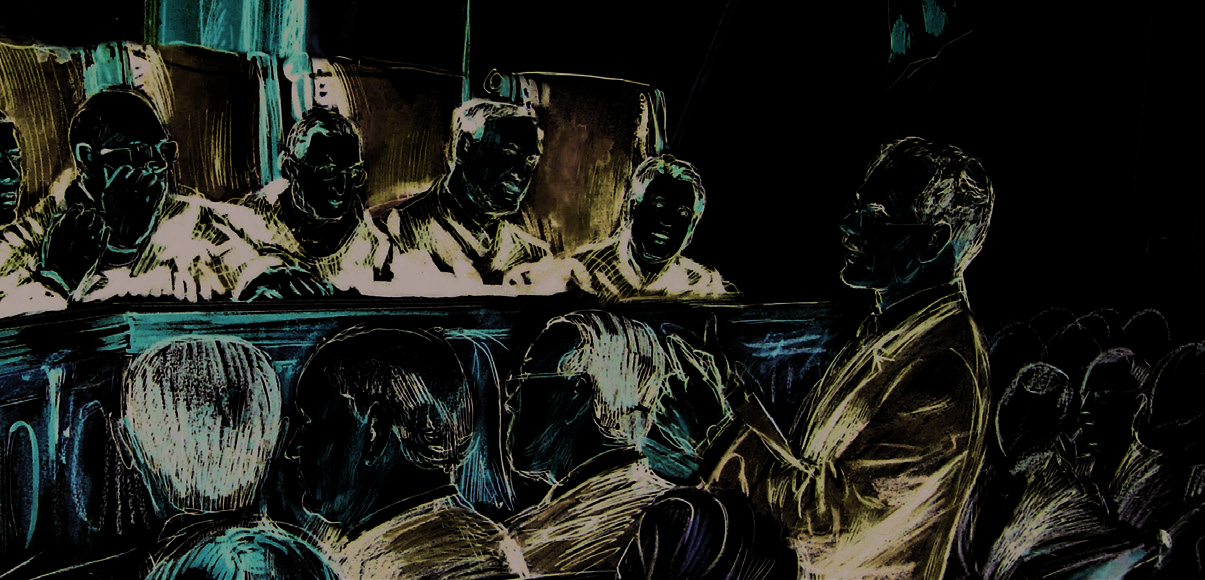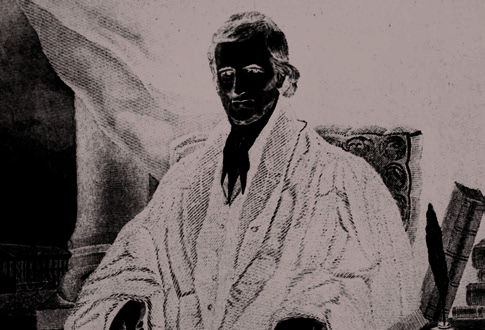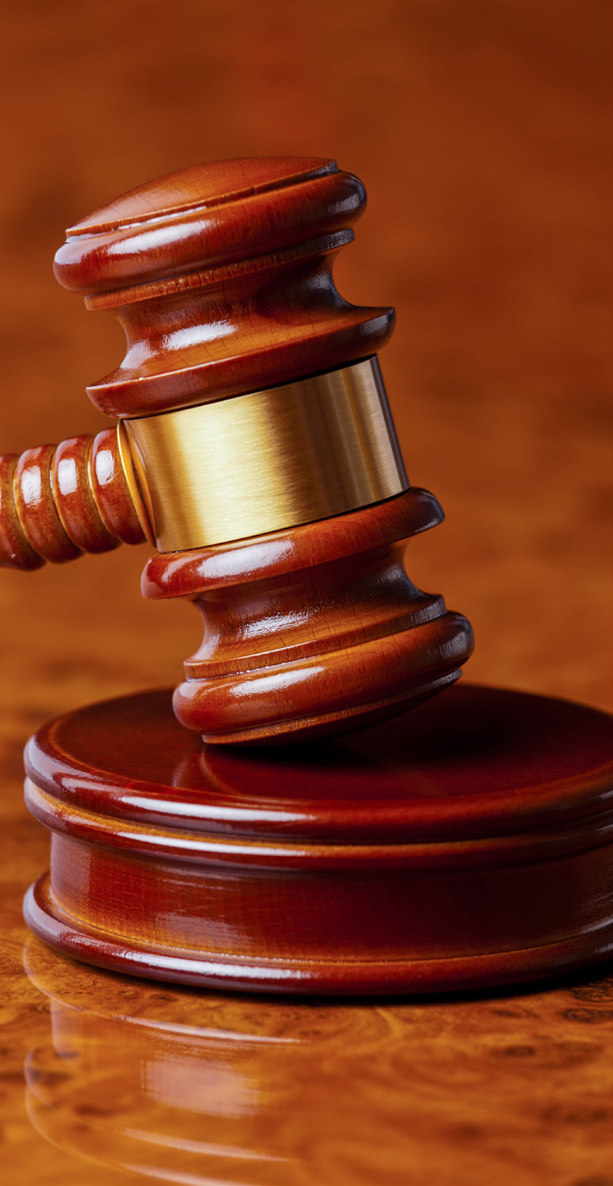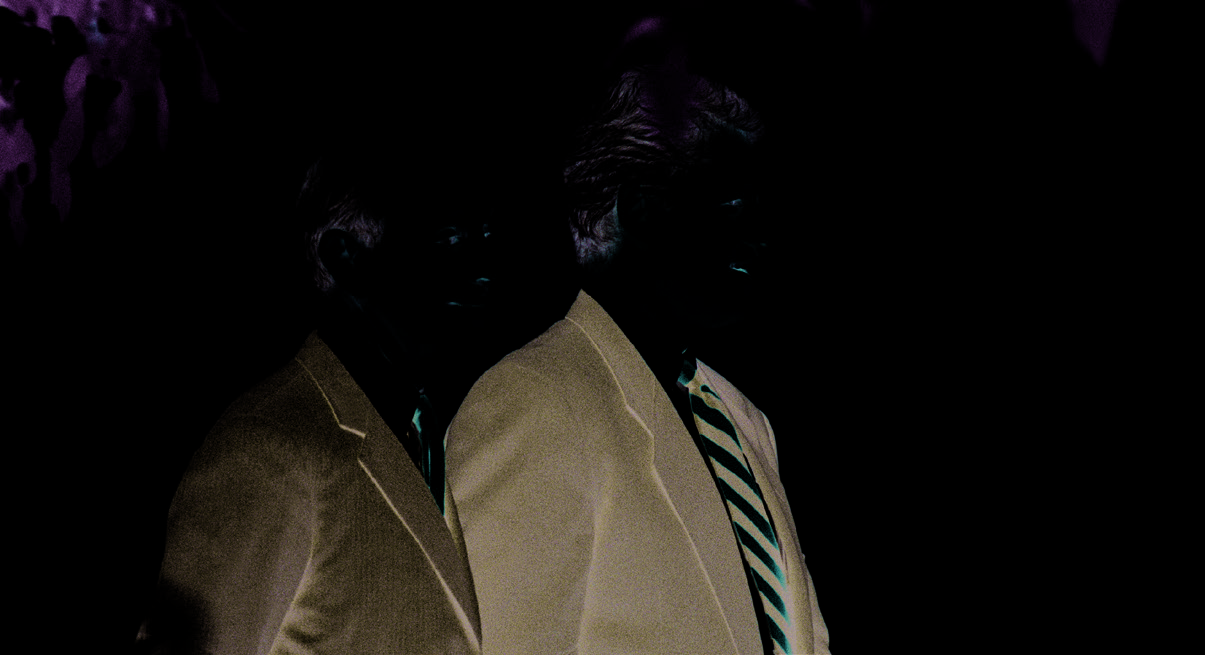Introduction
3

The Role of the Solicitor General
By Elena Kagan, Associate Justice of the Supreme Court and former Solicitor General of the United States I am very pleased to have this opportunity to describe to a the government in the lower courts is inconsistent with her distinguished international audience the role of the Office of understanding of what the Constitution and laws require.
the Solicitor General in the United States.
In addition to litigating cases in the Supreme Court, the The solicitor general’s office represents the United States Office of the Solicitor General supervises litigation on
Government in cases before the Supreme Court and super-
behalf of the government in the appellate courts. When the vises the handling of litigation on behalf of the government government receives an adverse ruling in the trial court, the in all appellate courts. Each year, the office participates in solicitor general determines whether the government will
three-quarters or more of the cases that the Supreme Court appeal that ruling. Similarly, the solicitor general decides considers. When the United States Government is a party, a whether to seek Supreme Court review of adverse appellate member of the solicitor general’s office argues on its behalf.
court rulings. By controlling which cases the government
The cases are quite varied and may entail defending the
appeals, the solicitor general’s office maintains consistency in constitutionality of a statute passed by Congress, asserting the the positions that the United States Government asserts in cases legality of an executive agency’s policy decision, or defending a throughout the nation’s judicial system.
conviction in a federal criminal case.
The Office of the Solicitor General is vital not only to ensuring In cases in which the United States is not a party, the solicitor that the interests of the United States Government are effectively general’s office often participates as a “friend of the Court,” or represented in our courts, but also, by ensuring the fairness and amicus curiae, and advises the court of the potential impact integrity of the government’s participation in the judicial system, of the case on the long-term interests of the United States.
to maintaining the rule of law in our democracy. 1
Sometimes the solicitor general’s office requests permission Elena Kagan served as solicitor general in 2009 and 2010. She to participate as an amicus curiae, and sometimes the Court joined the Supreme Court in August 2010.
actually solicits the opinion of the United States Government by inviting the solicitor general to submit a brief.
By virtue of its institutional position, the Office of the Solicitor General has a special obligation to respect the Supreme Court’s precedents and conduct its advocacy with
complete candor. On occasion, the solicitor general will even confess error when she believes that the position taken by An artist’s sketch of Solicitor General Donald Verrilli arguing a case before the Supreme Court. © AP Images 4
The U.S. Supreme Court: Equal Justice Under the Law
5


THE JUSTICES, THEIR JUDGMENTS AND THE WORKINGS OF THE COURT
Deciding “What the Law Is”
By David G. Savage
David G. Savage writes about the Supreme Court for the Los Angeles Times. He is also the author of the two-volume Guide to the U.S. Supreme Court published by the CQ Press in Washington. The U.S. Supreme Court opens its annual term each October facing an intriguing mix of cases and legal questions, all having bubbled up from state and federal courts across the nation. Some seem quite mundane, others are clearly momentous, but all of them call on the justices to decide the meaning of a federal law or the U.S. Constitution.
One case began when a police officer took his narcotics dog and force him to have his blood drawn? That was the question to sniff around the front door of a house in Miami. When
in the 2013 case of Missouri v. McNeely.
“Franky” alerted his handler by sitting down, the police decided marijuana must be growing inside, and they were right. But the A national spotlight turns on the court when it takes up
court took up the case of Florida v. Jardines to decide whether cases that define the powers of government and the rights of using a police dog at the door of a private home is an “unrea-individuals. None was more dramatic than the 2012 challenge sonable search” banned by the Fourth Amendment.
to the constitutionality of the Affordable Care Act, the health care law sponsored by President Barack Obama and Democrats Search cases come in many forms. Can the police, without a in Congress and fiercely opposed by Republicans.
search warrant, secretly attach a GPS device to a car and track its movements for weeks? No, the court said in U.S. v. Jones The case was seen as the most important since the late 1930s in 2012. Can a police officer who stops a suspected drunken in defining the constitutional limits on the powers of the driver in the middle of the night take him to a nearby hospital federal government and its relationship with the states. Small 4
The Justices, Their Judgments and the Workings of the Court 5

business owners had sued to challenge the law’s mandate that everyone obtain insurance coverage, while Republican state attorneys objected to Basic Facts About
the requirement that states expand their Medicaid coverage to serve more the U.S. Supreme
low-income residents. Medicaid is a state and federally funded program that helps qualified individuals obtain health care.
Court: The Cases
“In our federal system, the national government possesses only limited powers; the States and the people retain the remainder,” began Chief CASES FILED WITH THE
Justice John G. Roberts Jr. on the morning of June 28, 2012.
COURT EACH TERM
The insurance mandate could not be upheld under Congress’s power to regulate commerce because the mandate “does not regulate existing commercial activity. It instead compels individuals to become active in about 10,000
commerce by purchasing a product,” Roberts wrote in National Federation
“It is emphatically the province of the
CASES SELECTED BY THE
COURT FOR REVIEW EACH
judicial department to say what the
TERM
law is.” – Chief Justice John Marshall,
Marbury v. Madison, 1803
about 100
of Independent Business v. Sebelius. But he surprised many when he WRITTEN OPINIONS
accepted the fall-back argument that the tax was a constitutional penalty EACH TERM
for those who can afford it but choose not to buy insurance.
In the second half of the opinion, Roberts said states may opt out of the Medicaid expansion. The health care law had survived, but by the 80-90
narrowest of margins. “The Framers created a Federal Government of limited powers and assigned to this Court the duty of enforcing those limits. The Court does so today,” Roberts said in closing. “But the Court does not express any opinion on the wisdom of the Affordable Care Act.
PERCENTAGE OF UNANIMOUS
Under the Constitution, that judgment is reserved to the people.”
DECISIONS
DECIDING “WHAT THE LAW IS”
Throughout its history, the Supreme Court’s unique role has been to 25-33%
state the law and to define the powers of the government. “It is emphatically the province of the judicial department to say what the law is,”
APPROVAL OF JUSTICES TO
declared Chief Justice John Marshall in 1803. His opinion in Marbury WIN A CASE
v. Madison set forth three principles that formed the basis of American constitutional law. First, the Constitution stood above ordinary laws, 5 out of 9 justices
Chief Justice John Marshall
headed the Supreme Court
from 1801 to 1835. His Marbury v.
Madison decision helped define
the separation of powers in U.S.
government. ©AP Images
6
The U.S. Supreme Court: Equal Justice Under the Law
including those passed by Congress and signed by the President. Second, Basic Facts About
the Supreme Court would define the Constitution and say “what the law is.” And third, the court would invalidate laws that it had decided were in the U.S. Supreme
conflict with the Constitution.
Court: The Court
To those unfamiliar with U.S. democracy — as well as to many who are — it may seem peculiar to rest so much power in the hands of nine unelected judges. They can strike down laws — federal, state and local
— which were enacted by the people and their representatives. A paradox APPOINTMENT
it may be, but this was neither an accident nor a mistake. The framers TO THE COURT
of the Constitution placed great faith in the notion of a written plan for by the President
government which would stand as the law. It gave specific powers to three branches of government and divided authority among them. The Bill of Rights, ratified in 1791, set out the rights reserved to the people. For this CONFIRMATION OF
grand plan to work, a body which was independent of fleeting political APPOINTMENT
conflicts had to enforce the Constitution as the fundamental law. The TO THE COURT
justices of the Supreme Court are that body. The Supreme Court has the by the U.S. Senate
power to interpret the Constitution and U.S. law. The Constitution has a system of “checks and balances” that prevent the misuse of power. While NUMBER OF JUSTICES
the President can veto acts of Congress, and the Supreme Court can strike SINCE 1790
down laws if they violate the Constitution, Congress can pass revised laws or sponsor amendments that change the Constitution.
100 Associate Justices,
GIVING LOSERS ANOTHER CHANCE
17 Chief Justices
The Supreme Court sits atop a federal court system that includes 12
regional appeals courts and a specialized court that reviews patents and APPOINTED BUT NOT
international trade claims. Most federal cases start before a magistrate or a CONFIRMED
U.S. district judge and move up from them. Cases also come to the high court from a state court if a dispute there turns on an issue of federal law 36
or the Constitution.
To win a review in the high court, you must be a loser. The court hears CLERKS PER JUSTICE
appeals only from parties who have a lost a case, or at least a significant part of a case, in a lower court. The case also must present a live dispute 3
with real consequences. Purely abstract issues of law are shunned. Most importantly, however, the case must present a significant legal question LENGTH OF THE
which is in dispute. The first reason for accepting the case, according to APPOINTMENT
the justices, is when the lower courts are split on an issue of federal law. It does not make sense to have a federal law mean one thing in Boston and Lifetime or until retirement
something quite different in Houston. If at least four of the nine justices FIRST AFRICAN-vote to hear an appeal, the court will grant it a review. It takes a majority AMERICAN JUSTICE
of five to decide the case.
Justice Thurgood Marshall
FEDERAL VS. STATE LAWS
Appointed 1967
As written in 1787, the Constitution had only 4,500 words. It left many FIRST WOMAN JUSTICE
questions unanswered. Foremost among them was: What about the states?
The representatives of 12 of the 13 original states (Rhode Island did not Justice Sandra Day
participate) wrote and ratified the plan for a government of the new “United O’Connor
States,” yet then, as now, most day-to-day governing took place at the state Appointed 1981
and municipal levels. There, citizens register to vote. There, roads, schools, parks and libraries are built and operated. There, police and fire departments FIRST HISPANIC JUSTICE
protect the public’s safety. The Supreme Court has devoted much of its time Justice Sonia Sotomayor
to adjudicating conflicts between the powers of the federal government and Appointed 2009
the powers of the states and localities. It has not resolved all the conflicts.
The Justices, Their Judgments and the Workings of the Court 7
The Civil War began in 1861 when the Southern states asserted a The principle of free speech is a pillar of the Constitution, and right to secede from the United States.
the court has said it will protect the rights of unpopular speakers, Such federal-state conflicts, while not so incendiary, continue even when their words are outrageous and hurtful. In 2009, the today. Nearly every term, the court decides several cases court rejected a multimillion dollar jury verdict against a Kansas involving federal-state conflicts. Many products, including minister and his family for picketing and carrying signs at the prescription drugs, are tightly regulated from Washington by the funerals of soldiers who fought in Iraq. “Thank God for Dead federal Food and Drug Administration. So, can a patient who Soldiers,” one said. Chief Justice John Roberts said it is tempting is hurt by a regulated drug sue the manufacturer under a state’s to punish speakers whose words are the most offensive. “As a consumer protection law? Yes, the court said in Wyeth v. Levine, nation, we have chosen a different course — to protect even deciding the federal law did not displace the state’s law.
hurtful speech on public issues to ensure that we do not stifle public debate,” he said in Snyder v. Phelps. (2011) The court in Diana Levine, a musician from Vermont, sued Wyeth, a drug 2012 upheld the free-speech rights of liars and boasters when it maker, after she was injected with an anti-nausea drug and struck down the Stolen Valor Act, a federal law that made it a suffered a horrible complication. She did not know, nor did the crime to falsely claim to have won military honors ( United States nurse who injected her, that this drug could cause gangrene if it v. Alvarez).
were injected into an artery. Levine’s lower arm was amputated, and the Supreme Court upheld the jury’s $7 million verdict The court also must decide whether the government can use against the drug maker.
public money to shape the message of others. Several international groups working to combat HIV and AIDS objected to
In 2012, however, the court said the federal immigration law a U.S. federal funding law that required them, as a condition can displace a state’s policy of aggressive enforcement against of receiving money, to have a public policy “explicitly opposing illegal immigrants. In Arizona v. United States, the court rejected prostitution and sex trafficking.” They said such a policy would most of a state law that authorized local police to arrest and jail make it more difficult to persuade sex workers to come for illegal immigrants over the objections of federal officials. Justice testing and treatment. Early in 2013, the court agreed to rule on Anthony Kennedy said the Constitution makes federal measures whether forcing a private group to espouse a government’s policy
“the supreme law of the land.”
violated its rights to free speech (U.S. Agency for International Development v. Alliance for Open Society International).
THE CONSTITUTION GUIDES THE COURT
The court has given the strongest protection to speech that The court’s best-known decisions in recent decades arose from involves politics, but that, too, has provoked controversy. In 2010, constitutional claims involving individual rights. The Bill of the justices ruled that Citizens United, a small incorporated Rights protects the freedom of speech, the free exercise of religion, political group, had a free-speech right to make and market a and the freedom from an official “establishment of religion” and DVD called Hillary: The Movie that harshly portrayed former from “unreasonable searches” and “cruel and unusual punish-first lady and then–New York Senator Hillary Rodham Clinton as ments.” Those rights are tested every year in real cases.
she ran for president in 2008. The ruling set off a political furor The court invoked the Eighth Amendment’s ban on “cruel
because it made void a long-standing federal ban on campaign and unusual punishments” to limit harsh treatment for young spending by corporations. The story may not be over. Opponents offenders. In 2005, the justices abolished the death penalty for to the Citizens United decision, including several states, are convicted murderers under the age of 18 ( Roper v. Simmons), and urging Congress to pass a Constitutional amendment to reverse they later said that young offenders may not be sentenced to life the Supreme Court decision.
in prison with no hope of parole for crimes such as robbery or In the past, critics have faulted the court’s decisions which struck rape ( Graham v. Florida, 2010). More recently, the court took a down long-standing practices, such as segregation in public third step and ruled that, before juvenile murderers are sentenced schools ( Brown v. Board of Education, 1954), official prayers to prison for life, a judge must weigh their youth as a reason for a in public schools ( Engel v. Vitale, 1962), laws against abortion lesser term ( Miller v. Alabama, 2012).
( Roe v. Wade, 1973) or laws directed against gays and lesbians ( Lawrence v. Texas, 2003). But the justices say the Constitution’s drafters wrote a government charter designed to protect freedom, one that could be adapted to changing times. “They knew times
“As a nation, we have chosen a
can blind us to certain truths and later generations can see that different course — to protect even
laws once thought necessary and proper in fact serve only to oppress,” Justice Kennedy wrote in the Lawrence decision. “As the hurtful speech on public issues to
Constitution endures, persons in every generation can invoke its ensure that we do not stifle public
principles in their own search for greater freedom.” 1
debate.” – Chief Justice John G.
The opinions expressed in this article do not necessarily reflect the view or policies of the U.S. government.
Roberts Jr., Snyder v. Phelps, 2011
8
The U.S. Supreme Court: Equal Justice Under the Law

The U.S. Court
System
1. Cases start
in these courts:
• 94 U.S. Courts and U.S. Tax Court
• U.S. Court of International Trade, U.S. Court of
Federal Claims, U.S. Court of Veterans Appeals
• Army, Navy-Marine Corps, Air Force, and Coast
Guard Courts of Criminal Appeals
2. Disputes
can be appealed and decided by
these courts:
• U.S. Court of Appeals, 12 Circuits*
• U.S.Court of Appeals
for the Federal Circuit**
• U.S. Court of Appeals
for the Armed Forces
3. The Final Appeal
goes to the Supreme Court,
the last and highest authority
Supreme Court of the United States
* The 12 regional Cour ts of Appeals also receive
cases from a number of federal agencies
* * The Cour t of Appeals for the Federal Circuit
also receives cases from the International Trade
Commission, the Merit Systems Protection
Board, the Patent and Trademark Of fice, and
the Board of Contract Appeals
© Shutterstock / Lisa S.
The Justices, Their Judgments and the Workings of the Court 9

THE JUSTICES, THEIR JUDGMENTS AND THE WORKINGS OF THE COURT
Influence and Independence: Role of Politics in Court Decisions By Suzanna Sherry
Suzanna Sherry is the Herman O. Loewenstein Professor of Law at Vanderbilt University Law School in Nashvil e, Tennessee. She has co-authored three books on constitutional law and constitutional theory: Judgment Cal s: Separating Law From Politics in Constitutional Cases (2008), Desperately Seeking Certainty: The Misguided Quest for Constitutional Foundations (2002), and Beyond All Reason: The Radical Assault on Truth in American Law (1997). She has also written dozens of articles and co-authored three textbooks. Sherry acknowledges fears that a given justice’s political opinions shape his or her rulings. These fears, she concludes, are greatly overstated. Many factors, both personal and institutional, outweigh a justice’s political leanings in explaining his or her decisions.
Almost two centuries ago, the famous student of American
party is in the majority in the Senate will likely make very life and customs Alexis de Tocqueville wrote, “[T]here is different choices than a weak president faced with a Senate in hardly a political question in the United States which does not which the opposing party has the majority.
sooner or later turn into a judicial one.” That statement is still At any particular time, the Court will consist of justices accurate today, and it poses a unique dilemma for American appointed by different presidents and confirmed by different courts. How can judges resolve issues that, by their nature, are Senates. As the Court began its term in October 2012, for political rather than legal? The answer lies in the structure of example, the nine sitting justices were appointed by five the judicial branch and the decision-making process in which different presidents — three Republicans and two Democrats.
judges engage.
The diversity of political views on the Court and the periodic Unlike judges in many other countries, American judges are appointment of new justices guarantee that no single political drawn from the ranks of ordinary lawyers and installed on the faction will reliably prevail for long.
bench without any specialized training. Not even Supreme
Differences aside, all of the justices share a commitment to Court justices, although they often have prior experience on uphold the Constitution. Their fidelity to that goal makes the other courts, receive specialized training beyond the legal United States a country governed by the rule of law, rather education of every lawyer in the United States. And while than by the rule of men. The justices, in interpreting and individuals (including future Supreme Court justices) studying applying the Constitution and laws, do not view themselves as to become lawyers may choose to emphasize particular subject Platonic guardians seeking to govern an imperfect society but, areas, such as employment law or antitrust law, there are no instead, as faithful agents of the law itself. The Supreme Court courses that aim to prepare them for a judicial career.
can, and does, decide political questions, but does so using the Supreme Court justices, then, begin their careers as lawyers.
same legal tools that it uses for any legal question. If it were Their backgrounds, their political preferences, and their Justice David Souter (left) did not always follow the political lead of intellectual inclinations are, in theory, as diverse as you President George H.W. Bush. ©AP Images
might find in any group of lawyers. This diversity on the Supreme Court — especially political diversity — is somewhat narrowed by the process through which justices are chosen: Each is nominated by the president and must be confirmed by a majority vote in the Senate. Once appointed, justices serve until they die or choose to retire; there are no fixed terms and no mandatory retirement. Vacancies on the Supreme Court
are thus sporadic and unpredictable, and the political views of any particular justice will depend on the political landscape at the time of his or her appointment. A popular president whose 10 The U.S. Supreme Court: Equal Justice Under the Law
11

President Bill Clinton and his Supreme Court nominee Stephen Breyer at the White House in Washington in 1994. Breyer remains among the liberal Supreme Court judges. Courtesy of the Supreme Court of the United States otherwise, the Court might jeopardize its own legitimacy: The oversight of the legislatures as an essential part of their role public might not regard it as an institution particularly worthy as guardians of the Constitution. A justice who believes that of respect.
the Constitution ought to be interpreted according to its original meaning and who is reluctant to strike down laws will PERSONAL AND POLITICAL VIEWS
probably be quite unsympathetic to claims that various laws Nevertheless, justices do have personal views. They are
violate individuals’ constitutional rights. If that justice also appointed through a political process. Observers naturally happens to be politically conservative, we might mistakenly must ask how great a role their political views actually play.
attribute the lack of sympathy to politics rather than a judicial Some scholars argue that the justi










